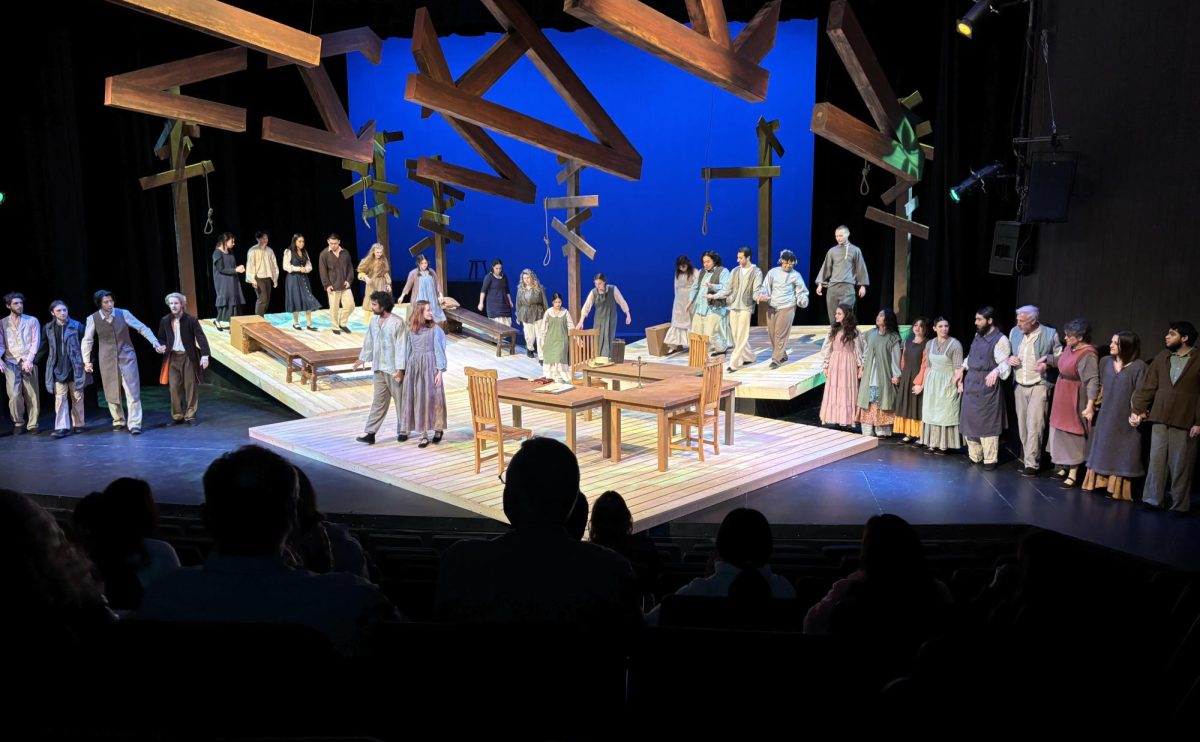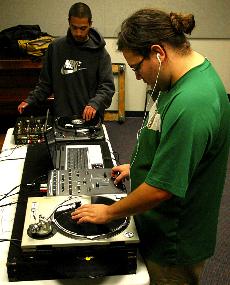Walk past the orchestra practicing in a large room near the entrance of the Music building and continue down hallways lined with practice rooms, where muffled piano and singing slips out from under soundproof doors.
Arriving at Room 108 in the back of the building, you discover the unexpected thump of hip-hop music and the wind-whipping sound of turntable scratching.
Almost every Monday evening, Benny Contreras and Mark Ebriega set up their turntables, mixers, speakers and laptop and practice the hip hop art of scratching.
And for the first half hour of their jam, they open their equipment to teach anybody who wants to learn.
“We teach them some basic scratching, different patterns, some exercises that they can practice themselves,” says Contreras as he traces out a scratch pad, using a record and a newspaper. “After that, they check out the jam session, so they can see it in action.”
“Scratching” creates new sounds by changing the existing sounds on a record.
It is a mix of manipulating the record’s speed and direction, knowing what sounds are where on a record, and using the cross fader and volume control on the mixer.
Contreras, 22, a sound engineering student who started scratching when he was 14, now scratches at local b-boy sessions.
Both Contreras and Ebriega compete in local DJ battles.
“There was this article on DJ Q-bert, and I was like ‘who is this guy?’ I just wanted to find out” says Ebriega. “Then I heard the Scratch Pickles and ‘whoa’ I’m still scratching”
There are a number of different scratches, some trademarked by certain DJ’s, many named for their sound quality: “baby scratch,” “echo,” “whip,” “boomerang,” so on, and any combination of these.
The offer of lessons and equipment is no small thing. Starting out can be expensive, even when buying a cheaper package deal at a music mega-store like Guitar Center.
Take the offer.







































































